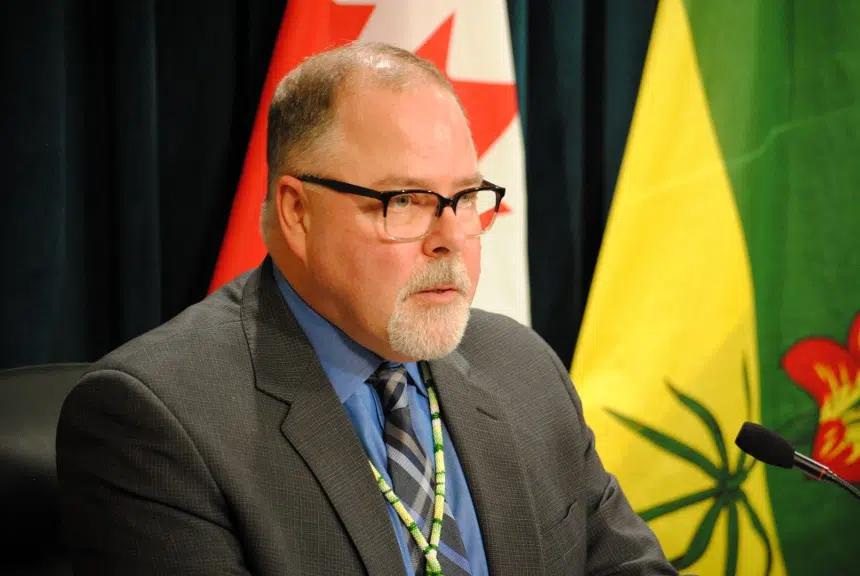When it comes to COVID-19 testing in Saskatchewan, the challenge might be uptake rather than capacity.
The goal in the province has been to ramp up capacity so that 4,000 tests can be conducted each day by September when students return to school.
Scott Livingstone, the CEO of the Saskatchewan Health Authority, said efforts are being made to get there by expanding equipment and staff.
But speaking to Gormley on Monday morning, Livingstone said actual testing has never surpassed capacity. At roughly 2,000 per day, testing hasn’t met it either, not even since universal testing regardless if symptoms are showing was introduced on July 14.
“We still haven’t had people coming in in droves,” Livingstone said.
“Testing isn’t mandatory and I don’t see it becoming mandatory, but what we are doing to reduce some of those barriers is looking at hours of operation. Can we expand hours of operation (and) make it more convenient (for) folks to come in?”
There could be many factors getting in the way of people seeking tests. It could be the stigma of testing positive, Livingstone said.
Others might have to do with ease of access, like the need to obtain a referral from the 811 HealthLine, he continued.
Livingstone said the SHA has tried “innovative” things like sending testing teams to communal living areas rather than waiting for residents to come to them.
He mused about drive-through testing, which is something Premier Scott Moe has suggested.
“What we’re trying to do is make it as easy as possible for folks to get testing,” Livingstone said.
Detection of the virus is also expected to become a routine part of life as students return to school next week.
Testing in schools is voluntary but health officials might step in if students start calling in sick in large numbers.
“If we have a higher than 10 per cent absentee rating at a school, that’s a flag for us that maybe something’s going on and we need to get there and do some testing,” Livingstone said.
One of the next challenges for health officials is introducing random surveillance for the virus. Livingstone said they’re working on an expanded strategy that will involve mobile testing units, noting consent from parents will be needed.
He said the public has a role to play in keeping COVID-19 out of schools, saying transmission in schools mirrors what happens in the broader community.
“It’s that public health (advice) — the physical distancing, wearing of a mask (and) hand hygiene — that has really been helping us in this province keep our rates of transmission low,” Livingstone said.











